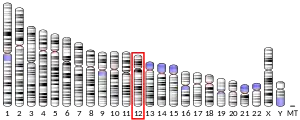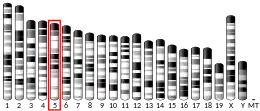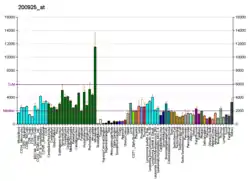| COX6A1 | |||||||||||||||||||||||||||||||||||||||||||||||||||
|---|---|---|---|---|---|---|---|---|---|---|---|---|---|---|---|---|---|---|---|---|---|---|---|---|---|---|---|---|---|---|---|---|---|---|---|---|---|---|---|---|---|---|---|---|---|---|---|---|---|---|---|
| Identifiers | |||||||||||||||||||||||||||||||||||||||||||||||||||
| Aliases | COX6A1, COX6A, COX6AL, CMTRID, cytochrome c oxidase subunit 6A1 | ||||||||||||||||||||||||||||||||||||||||||||||||||
| External IDs | OMIM: 602072 MGI: 103099 HomoloGene: 3219 GeneCards: COX6A1 | ||||||||||||||||||||||||||||||||||||||||||||||||||
| |||||||||||||||||||||||||||||||||||||||||||||||||||
| |||||||||||||||||||||||||||||||||||||||||||||||||||
| |||||||||||||||||||||||||||||||||||||||||||||||||||
| |||||||||||||||||||||||||||||||||||||||||||||||||||
| |||||||||||||||||||||||||||||||||||||||||||||||||||
| Wikidata | |||||||||||||||||||||||||||||||||||||||||||||||||||
| |||||||||||||||||||||||||||||||||||||||||||||||||||
Cytochrome c oxidase subunit 6A1, mitochondrial is a protein that in humans is encoded by the COX6A1 gene. Cytochrome c oxidase 6A1 is a subunit of the cytochrome c oxidase complex, also known as Complex IV, the last enzyme in the mitochondrial electron transport chain. A mutation of the COX6A1 gene is associated with a recessive axonal or mixed form of Charcot-Marie-Tooth disease.[5][6]
Structure
The COX6A1 gene, located on the q arm of chromosome 12 in position 24.2, contains 3 exons and is 2,653 base pairs in length.[5] The COX6A1 protein weighs 12 kDa and is composed of 109 amino acids.[7][8] The protein is a subunit of Complex IV, a heteromeric complex consisting of 3 catalytic subunits encoded by mitochondrial genes and multiple structural subunits encoded by nuclear genes. This nuclear gene encodes polypeptide 1 (liver isoform) of subunit VIa, and polypeptide 1 is found in all non-muscle tissues. Polypeptide 2 (heart/muscle isoform) of subunit VIa is encoded by a different gene, COX6A2, and is present only in striated muscles. These two polypeptides share 66% amino acid sequence identity.[5]
Function
Cytochrome c oxidase (COX) is the terminal enzyme of the mitochondrial respiratory chain. It is a multi-subunit enzyme complex that couples the transfer of electrons from cytochrome c to molecular oxygen and contributes to a proton electrochemical gradient across the inner mitochondrial membrane to drive ATP synthesis via protonmotive force. The mitochondrially-encoded subunits perform the electron transfer of proton pumping activities. The functions of the nuclear-encoded subunits are unknown but they may play a role in the regulation and assembly of the complex.[5]
Summary reaction:
- 4 Fe2+-cytochrome c + 8 H+in + O2 → 4 Fe3+-cytochrome c + 2 H2O + 4 H+out[9]
Clinical significance
A mutation leading to a 5 base pair deletion in the COX6A1 gene is associated with Charcot-Marie-Tooth disease (CMT). CMT is the most common inherited neuropathy and can result from mutations in over 30 different loci. Expression of COX6A1 is significantly reduced in affected individuals.[10]
The Trans-activator of transcription protein (Tat) of human immunodeficiency virus (HIV) inhibits cytochrome c oxidase (COX) activity in permeabilized mitochondria isolated from both mouse and human liver, heart, and brain samples. Rapid loss of membrane potential (ΔΨm) occurs with submicromolar doses of Tat, and cytochrome c is released from the mitochondria.[11]
References
- 1 2 3 GRCh38: Ensembl release 89: ENSG00000111775 - Ensembl, May 2017
- 1 2 3 GRCm38: Ensembl release 89: ENSMUSG00000041697 - Ensembl, May 2017
- ↑ "Human PubMed Reference:". National Center for Biotechnology Information, U.S. National Library of Medicine.
- ↑ "Mouse PubMed Reference:". National Center for Biotechnology Information, U.S. National Library of Medicine.
- 1 2 3 4 "Entrez Gene: COX6A1 cytochrome c oxidase subunit VIa polypeptide 1".
- ↑ Hey Y, Hoggard N, Burt E, James LA, Varley JM (Sep 1997). "Assignment of COX6A1 to 6p21 and a pseudogene (COX6A1P) to 1p31.1 by in situ hybridization and somatic cell hybrids". Cytogenetics and Cell Genetics. 77 (3–4): 167–8. doi:10.1159/000134565. PMID 9284905.
- ↑ Zong NC, Li H, Li H, Lam MP, Jimenez RC, Kim CS, Deng N, Kim AK, Choi JH, Zelaya I, Liem D, Meyer D, Odeberg J, Fang C, Lu HJ, Xu T, Weiss J, Duan H, Uhlen M, Yates JR, Apweiler R, Ge J, Hermjakob H, Ping P (Oct 2013). "Integration of cardiac proteome biology and medicine by a specialized knowledgebase". Circulation Research. 113 (9): 1043–53. doi:10.1161/CIRCRESAHA.113.301151. PMC 4076475. PMID 23965338.
- ↑ "Cytochrome c oxidase subunit 6A1, mitochondrial". Cardiac Organellar Protein Atlas Knowledgebase (COPaKB). Archived from the original on 2018-07-20. Retrieved 2018-07-18.
- ↑ Voet D, Voet JG, Pratt CW (2013). "Chapter 18". Fundamentals of biochemistry: life at the molecular level (4th ed.). Hoboken, NJ: Wiley. pp. 581–620. ISBN 978-0-470-54784-7.
- ↑ Tamiya G, Makino S, Hayashi M, Abe A, Numakura C, Ueki M, Tanaka A, Ito C, Toshimori K, Ogawa N, Terashima T, Maegawa H, Yanagisawa D, Tooyama I, Tada M, Onodera O, Hayasaka K (Sep 2014). "A mutation of COX6A1 causes a recessive axonal or mixed form of Charcot-Marie-Tooth disease". American Journal of Human Genetics. 95 (3): 294–300. doi:10.1016/j.ajhg.2014.07.013. PMC 4157141. PMID 25152455.
- ↑ Lecoeur H, Borgne-Sanchez A, Chaloin O, El-Khoury R, Brabant M, Langonné A, Porceddu M, Brière JJ, Buron N, Rebouillat D, Péchoux C, Deniaud A, Brenner C, Briand JP, Muller S, Rustin P, Jacotot E (2012). "HIV-1 Tat protein directly induces mitochondrial membrane permeabilization and inactivates cytochrome c oxidase". Cell Death & Disease. 3 (3): e282. doi:10.1038/cddis.2012.21. PMC 3317353. PMID 22419111.
Further reading
- Hochstrasser DF, Frutiger S, Paquet N, Bairoch A, Ravier F, Pasquali C, Sanchez JC, Tissot JD, Bjellqvist B, Vargas R (Dec 1992). "Human liver protein map: a reference database established by microsequencing and gel comparison". Electrophoresis. 13 (12): 992–1001. doi:10.1002/elps.11501301201. PMID 1286669. S2CID 23518983.
- Fabrizi GM, Sadlock J, Hirano M, Mita S, Koga Y, Rizzuto R, Zeviani M, Schon EA (Oct 1992). "Differential expression of genes specifying two isoforms of subunit VIa of human cytochrome c oxidase". Gene. 119 (2): 307–12. doi:10.1016/0378-1119(92)90288-Z. PMID 1327966.
- Fabrizi GM, Rizzuto R, Nakase H, Mita S, Kadenbach B, Schon EA (Aug 1989). "Sequence of a cDNA specifying subunit VIa of human cytochrome c oxidase". Nucleic Acids Research. 17 (15): 6409. doi:10.1093/nar/17.15.6409. PMC 318308. PMID 2549515.
- Schmidt TR, Jaradat SA, Goodman M, Lomax MI, Grossman LI (Jun 1997). "Molecular evolution of cytochrome c oxidase: rate variation among subunit VIa isoforms". Molecular Biology and Evolution. 14 (6): 595–601. doi:10.1093/oxfordjournals.molbev.a025798. PMID 9190060.
- Merante F, Ling M, Duncan AM, Duff C, Robinson BH (Jun 1997). "Cloning, characterization, and chromosomal localization of human liver form cytochrome c oxidase subunit VIa related genes". Genome. 40 (3): 325–31. doi:10.1139/g97-045. PMID 9202413.
- Wong-Riley M, Guo A, Bachman NJ, Lomax MI (Apr 2000). "Human COX6A1 gene: promoter analysis, cDNA isolation and expression in the monkey brain". Gene. 247 (1–2): 63–75. doi:10.1016/S0378-1119(00)00121-9. PMID 10773445.
External links
- Mass spectrometry characterization of COX6A1 at COPaKB
- Human COX6A1 genome location and COX6A1 gene details page in the UCSC Genome Browser.
- Overview of all the structural information available in the PDB for UniProt: P12074 (Cytochrome c oxidase subunit 6A1, mitochondrial) at the PDBe-KB.
This article incorporates text from the United States National Library of Medicine, which is in the public domain.




